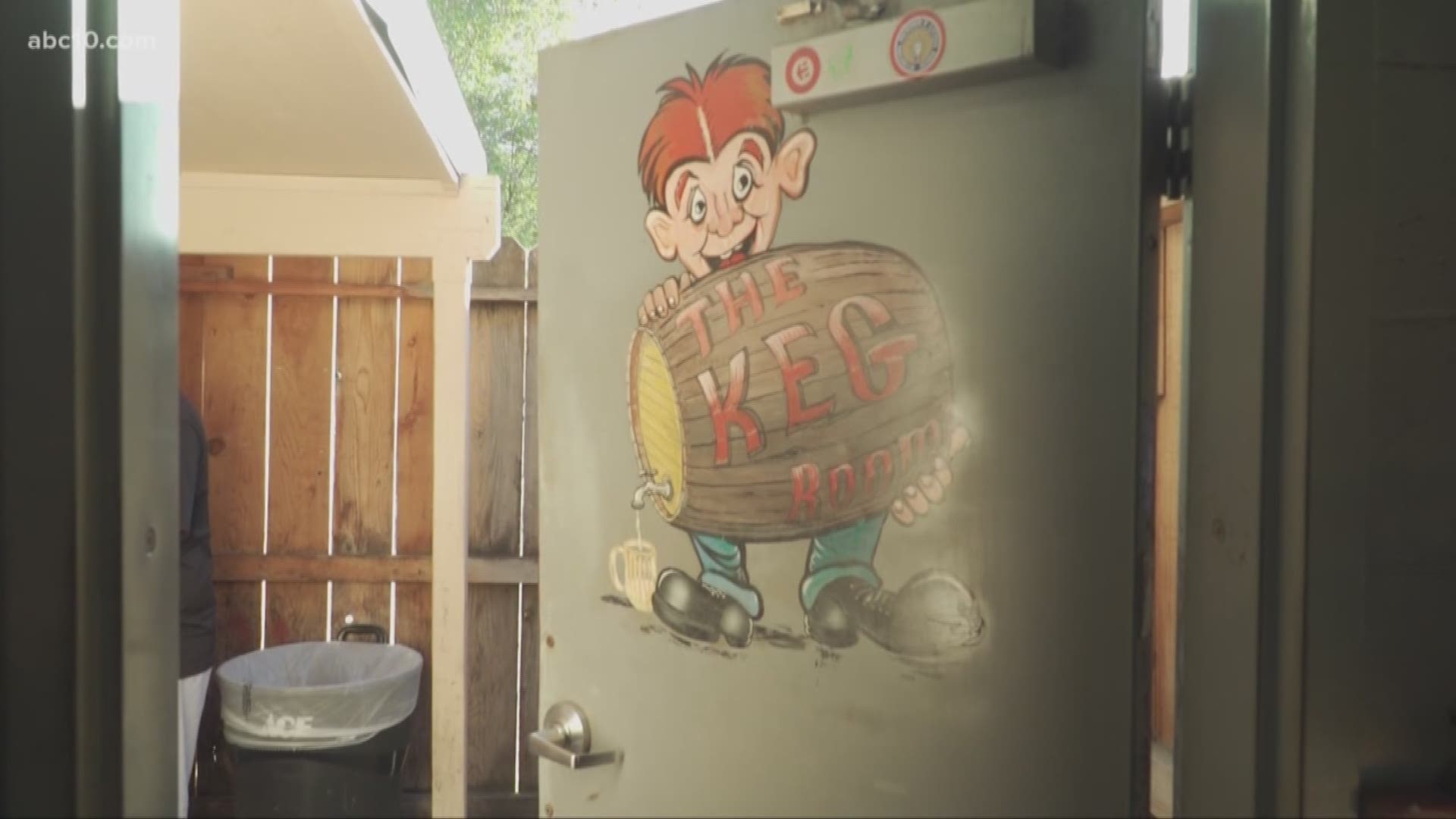OROVILLE, Calif. — Cal Fire is bringing extra resources to areas under a "red flag warning" this weekend, while more than 10,000 PG&E customers lost power Saturday evening as the utility looked to avoid causing another wildfire during dry, warm, windy weather conditions.
The Keg Room in Oroville is a local watering hole that’s open until 2 a.m., but bartender Jennifer Roalsen said early Saturday evening that she’s well aware PG&E could start cutting the power here at 10 p.m.
The bar, however, has a generator, and in the last PG&E Public Safety Power Shutoff there, the Keg Room became a gathering place for folks without electricity. The same can happen tonight, Roalsen said.
“It will be open until 2 a.m. There will be lots of partying. We have a generator, full service and great bartenders,” Roalsen told ABC10 Saturday.
She worries though— in the event of a long power outage that outlasts the generator, what that would mean for business, for her income. Plus, her home lost power in the last shutoff and it’s poised to lose power Saturday night.
“I mean, it’s definitely frustrating at my house, worrying about my freezers,” Roalsen said. “I can’t even open my fridge, you know.”
She hears a lot as a bartender, including customers’ opinions on PG&E’s power shutoffs.
“People are very mad and frustrated, absolutely,” she said. “Older people have to go find somewhere when they have oxygen machines and no air conditioning, and having to leave your house when you want to be home for your weekend or the evening.”
At least until 2 a.m., she said, people can go there.
“Definitely come to the Keg Room. You’ll get great service and have a good time,” she said.
Meanwhile, Cal Fire urges people to not let their guard down; Peak fire danger season is here, and it’s not over for awhile.
“Well, it’s historically September and October are the worst two months in the state of California for wildfires, believe it or not, excluding, of course, 2017 and 2018,” Cal Fire Deputy Chief Scott McLean told ABC10. “You have your summer months: it’s dry, it’s dry, it’s dry, you’re getting the winds that are continuing to dry out that vegetation, so come fall, the winds actually do pick up, which we’ve seen as of late, hence the red flag warnings.”
Statewide, he says, up to 200 wildfires are starting each week—though 95 percent of them stay under 10 acres.
“Even the smallest fire – maybe a 50-acre fire – is causing evacuations, so you need to be prepared, you need to be ready,” he said.
He worries that people are becoming complacent about fire safety, since this year’s weather has been milder compared to 2018 and 2017.
So far in 2019, some 41,000 acres have burned in CAL FIRE jurisdiction, McLean said. Compare that to 2018, where by this time last year, more than 627,000 acres had burned.
“So you can see the stark difference,” McLean said. “But we’re still having several fires. We’re well over 4,500 fires to date, all kept fairly small.”
Oct. 6-12 is National Fire Prevention Week, and McLean asks people to be mindful about their safety plans and preparations - in the event of both a house fire and a wildfire.
More information from Cal Fire on wildfire preparedness is HERE.
Continue the conversation with Becca on Facebook.
WATCH ALSO: Over 100,000 homes between Sacramento and Truckee considered high risk of wildfire damage
With California experiencing some of the most devastating wildfires in the United States in recent years, it should come at no surprise that nine of the 15 most at-risk metropolitan areas in the country are in the Golden State.

